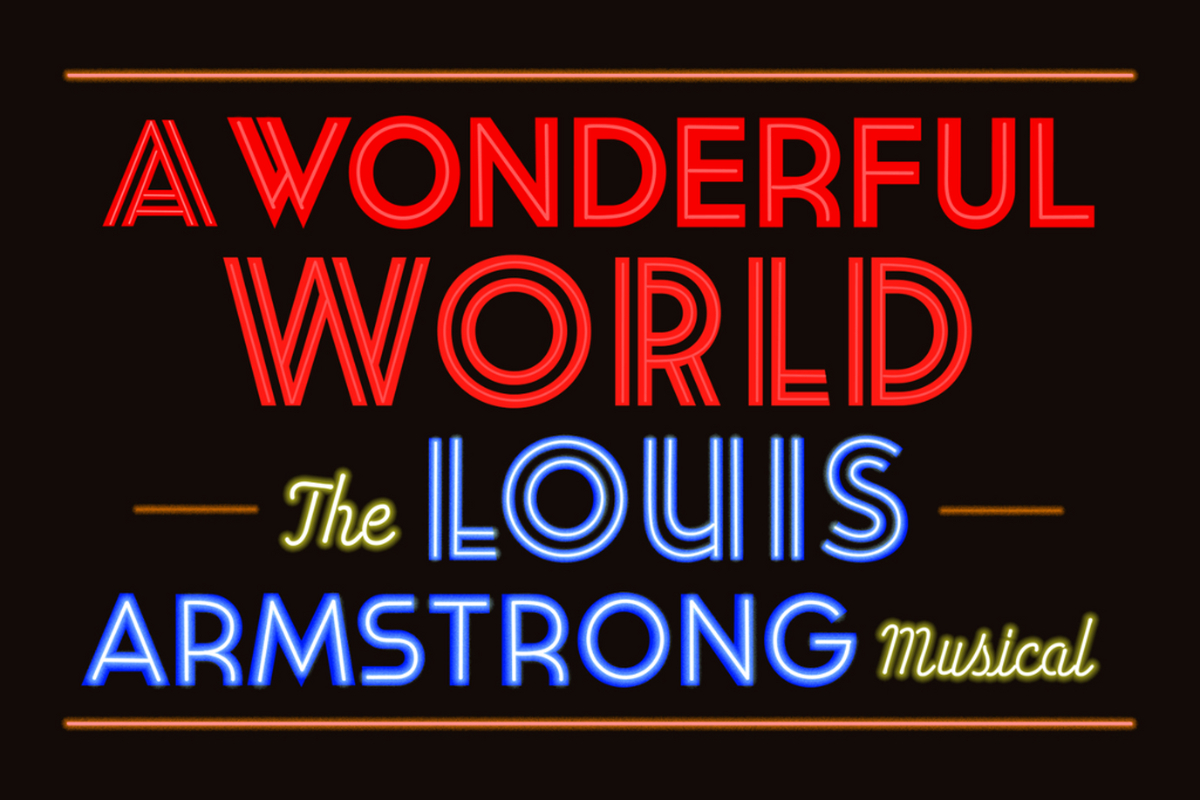Building the World of A WONDERFUL WORLD
A Wonderful World begins previews at Studio 54 on October 16, 2024.
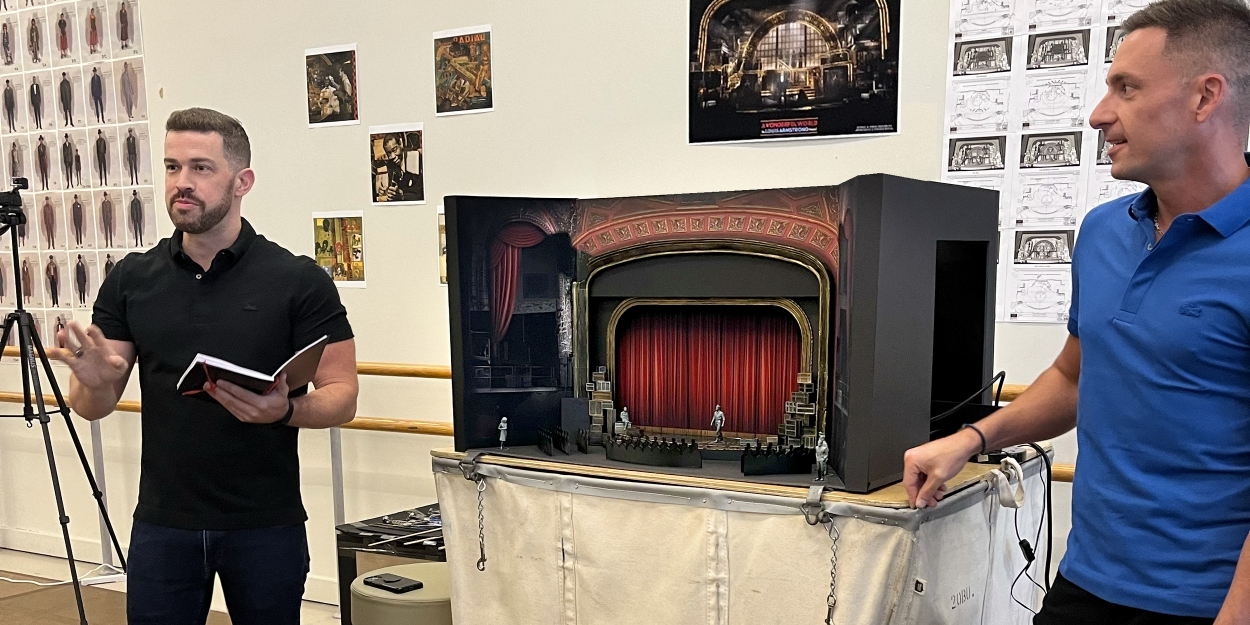
When it comes to creating exciting new environments for the stage, Adam Koch and Steven Royal know what they're doing. With over 200 shows under their belts as collaborators, these scenic and video designers will soon transport audiences through the vibrant life of Louis Armstrong in A Wonderful World.
The Broadway production marks the fourth version of the show, which previously ran in New Orleans and Chicago in 2023 and at Miami New Drama in 2021. Royal and Koch have been with it all the way, even from its first reading in 2019 (before the Miami production was postposted by the pandemic).
"Sometimes in the past, the bigger the show was, the more skittish I've gotten on an artistic level. So I'm so excited for this to be seen by more people because we just did it in what was kind off the beaten path kind of place originally in Miami," explained Koch. "The expressionism of the design overall is pretty wild. It's been translated from this modest beginning, where there was a little pressure artistically. We just did what was right for the show and took big swings visually."
The duo started the design process with a conversation with co-director Christopher Renshaw. "He wanted for the curtain to go up and for it to be a celebration of the trumpet, because that's what makes this biographical story specific to us. Because look, there are other musicians stories... what makes this one unique? And that's why you come to see Louis Armstrong! That is displayed in the set in subtle ways."

Armstrong's story unfolds in the musical via the extraordinary women who helped shape his remarkable life and career. Those relationships are also key to the their design. "Those four love stories are the anchor that everything else hangs on. It's all kind of suggestive of an artistic restlessness," said Koch. "And so essentially at the heart of it, it's about a man who was always looking for the next thing- he never settled down. You will see that both in the staging and the set... there's a lot of like luggage and suitcase through lines."
Louis Armstrong, considered one of the most influential figures in jazz, was born in 1901 Louisiana and died in New York City in 1971. How excactly did the duo hone in on the look of a 70-year story?
"It's such a wide gamut of the beginning of the century and ending in the 70s," explained Royal. "The technology and this sort of the different ways of sort of mass media coming into play and how he played against that and used it as well... so the research was essentially finding all kinds of different performances of his and just sort of seeing how stages evolved and got bigger and started looking different. And then we got color TV! There was a technical evolution that we could sort of support, not in full-stage pictures, but in the sort of details as things progress."

"Yeah, the most exciting part of the stage design was looking at the 70-year span of technology, which you'll see in very subtle ways," added Koch. "Like the set electrics in the beginning are lanterns, and by the end it's neon because it shows us the progression all the way through, from him listening to a phonograph to being recorded on television. He certainly was a witness to a large span of technology."
Video and projection are key elements to telling Armstrong's story, which involves over 70 scenes and locations.
"As we were figuring out the physical production, we've discovered that a video wall is just more scenery. It's not another thing. So how we approach all of our video work as scenery. We design that scenery just like we design all the other scenery that actually gets built in the scene shop. This gets all built in the computer in the same way."
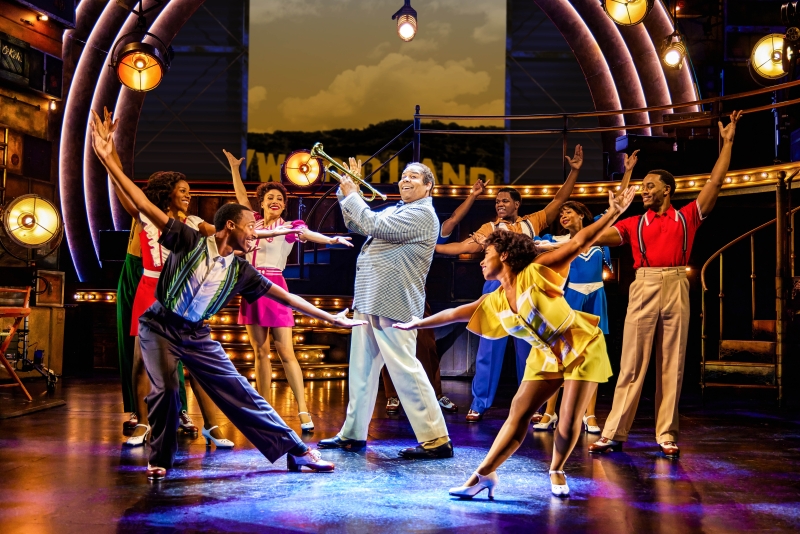
Between the four productions, the pair admits that the shift from Chicago to Broadway has been the biggest. "We spruced some things up, we added some things for the tour last year, but this year, we really got some great feedback in Chicago and everyone has really taken that and run with it," said Royal. "The biggest challenge has been having pieces of the set that we designed five years ago that are going to be on Broadway that were built for Miami. They've been beautifully refinished, but it It was a challenge taking everything that we currently have and making it work for this very new version of the show."
After 11 years of collaboration, Royal and Koch make their Broadway debuts together with this piece. "[Our collaboration] is like a baton relay race, but it goes around the track like 20 times," joked Koch. "I do a little something, then I pass it off to him. He does a little something, then it comes back around. So it's kind of like a wash cycle. It's more and more refined as it gets closer and closer, because each of us have different interests and also strengths and weaknesses."
"I will say we're always on the same page," added Royal. "The details are sometimes different and the way we think we're gonna get there might be a little bit different, but big picture, I don't think we've ever been on different different pages for the end result."

Beyond their designs, they both agree that audiences have lots to be excited about.
"The performance by James [Monroe Iglehart] is spectacular," said Royal. "But I also think people are going to be surprised about the way all of these jazz standards have been rearranged into a musical that isn't similar to some of our more recent jukebox shows. You might not know a lot of these songs. I think the way the music has been worked into the story and the way the music is so important to telling the story is one of the most exciting parts too. It's a celebration of jazz and a celebration of music."
"I've never even thought about it as a jukebox musical," added Koch. "The music is used so organically. Maybe you know some of [the songs]... but they've been enlivened with new orchestrations. I do also think it'll remind people about the catalog of American jazz music, which is one of our gifts to the world as far as a country. It's a jewel in our crown."



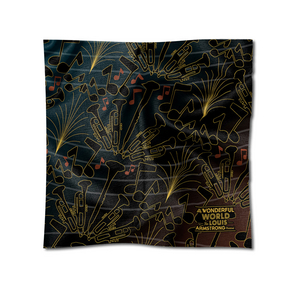 A Wonderful World Pattern Scarf
A Wonderful World Pattern Scarf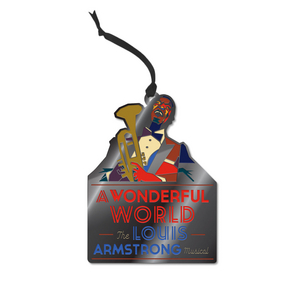 A Wonderful World Logo Ornament
A Wonderful World Logo Ornament A Wonderful World Broadway Logo Pin
A Wonderful World Broadway Logo Pin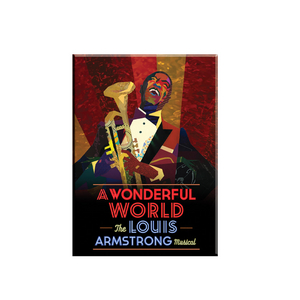 A Wonderful World Broadway Logo Magnet
A Wonderful World Broadway Logo Magnet